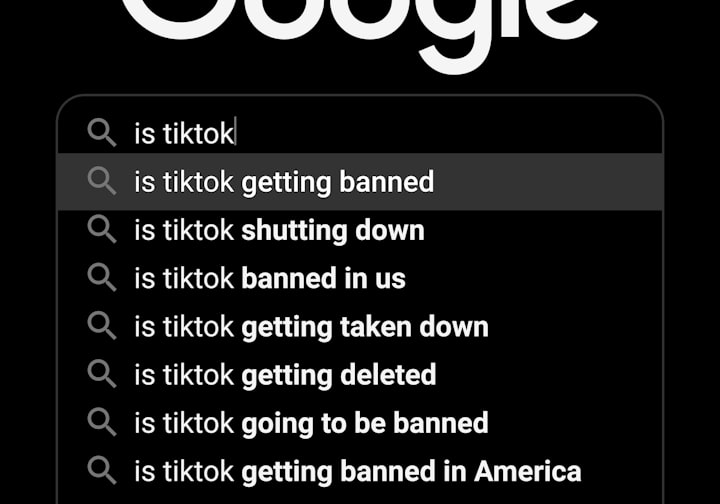TikTok Ban: A Digital Dilemma and Its Ripple Effects
tiktok banned
In the realm of social media, where bytes of information travel at the speed of light and trends rise and fall in the blink of an eye, one platform reigned supreme: TikTok. With its addictive short-form videos, catchy soundtracks, and global reach, TikTok captivated the hearts and minds of millions around the world. Yet, beneath its vibrant facade lay a maelstrom of controversies, leading to its eventual ban in several countries. This is the story of TikTok—the rise, the fall, and the repercussions of its ban.
Chapter 1: The Rise of TikTok
Born in China in 2016 under the name Douyin, TikTok quickly gained popularity among Chinese youth, offering a platform for creative expression and social interaction through short videos. In 2017, its parent company, ByteDance, launched TikTok internationally, setting the stage for its meteoric rise to fame.
With its intuitive interface, algorithm-driven content discovery, and a vast library of user-generated content, TikTok captured the imagination of users worldwide. From dance challenges to lip-sync videos, comedy sketches to educational content, TikTok offered something for everyone, transcending cultural and linguistic barriers.
As the platform gained momentum, influencers emerged, amassing millions of followers and reshaping the landscape of digital marketing. Brands, too, recognized the potential of TikTok as a marketing tool, partnering with influencers and launching viral campaigns to reach a younger demographic.
Chapter 2: Controversies and Concerns
However, amid TikTok's meteoric rise, controversies began to emerge, casting a shadow over its seemingly unstoppable ascent. Chief among these concerns were issues related to data privacy and security. Critics raised alarm bells over TikTok's data collection practices, alleging that the platform harvested vast amounts of user data without adequate consent or safeguards.
Furthermore, TikTok's ties to China's government raised suspicions among policymakers in several countries, who feared that the platform could be used as a tool for espionage or propaganda. These concerns were further fueled by the Chinese government's stringent censorship laws and its track record of surveilling its citizens' online activities.
In addition to privacy and security concerns, TikTok also faced criticism over its content moderation policies. Instances of cyberbullying, hate speech, and misinformation proliferated on the platform, prompting calls for stricter moderation and accountability measures.
Chapter 3: The Banhammer Falls
Amid mounting pressure from policymakers and public scrutiny, the fate of TikTok hung in the balance. In 2020, the United States took the first decisive step by announcing plans to ban TikTok over national security concerns. The Trump administration cited fears that TikTok could be exploited by the Chinese government to access sensitive information about American citizens.
In response, TikTok launched a series of legal challenges and attempted to assuage concerns by appointing American executives and exploring options to sell its US operations to a domestic buyer. However, these efforts failed to quell the growing bipartisan support for a ban, culminating in an executive order that sought to force TikTok's divestiture or face a ban on US soil.
As the legal battles raged on, other countries followed suit, with India being the first to impose a blanket ban on TikTok and other Chinese-owned apps in 2020. India cited similar national security concerns and a desire to safeguard the privacy of its citizens as reasons for the ban.
Chapter 4: The Fallout
The ban sent shockwaves through the digital landscape, leaving millions of TikTok users and creators in limbo. For influencers who had built their careers and livelihoods on the platform, the ban spelled financial uncertainty and the loss of a valuable audience.
Furthermore, the ban had ripple effects beyond TikTok itself, impacting industries that relied on the platform for marketing and advertising. Brands that had invested heavily in TikTok campaigns were forced to rethink their strategies, while influencer marketing agencies scrambled to find alternative platforms for their clients.
In China, the ban on TikTok's international operations dealt a blow to ByteDance's global ambitions and raised questions about the future of Chinese tech companies on the world stage. The Chinese government, too, faced backlash over its perceived role in the ban and its broader efforts to assert control over the country's tech sector.
Chapter 5: A New Era
As the dust settled on TikTok's ban, a new era of social media dawned—one marked by heightened scrutiny, regulatory challenges, and the ever-present specter of geopolitical tensions. The ban served as a wake-up call for tech companies and policymakers alike, highlighting the need for stronger data privacy protections, transparent content moderation policies, and international cooperation on cybersecurity issues.
For TikTok's competitors, the ban presented an opportunity to fill the void left by its absence and attract disaffected users and creators. Platforms like Instagram Reels, YouTube Shorts, and Snapchat Spotlight sought to capitalize on TikTok's ban by offering similar short-form video experiences and enticing features.
Yet, amidst the upheaval and uncertainty, TikTok remained resilient, adapting to new challenges and exploring opportunities for growth in untapped markets. The ban forced TikTok to reevaluate its global strategy, invest in localization efforts, and strengthen its relationships with regulators and policymakers.
Epilogue:
As the digital landscape continues to evolve, TikTok's ban serves as a cautionary tale—a reminder of the power and perils of social media in an interconnected world. While the ban may have silenced TikTok's familiar tunes and dance challenges, its legacy lives on in the millions of memories and moments shared on the platform.
For TikTok's users and creators, the ban was more than just the loss of a beloved app—it was a wake-up call to the fragility of digital freedoms and the need to safeguard privacy, security, and freedom of expression in the digital age. And though TikTok may have fallen silent, the echoes of its rise and fall reverberate through the annals of internet history, shaping the future of social media for generations to come.
About the Creator
WILLIAM DIAGO RODRIGUES
Hi! Everyone out there I am a Online Enterpreneur love to create, write and ellaborate different niches and write different Articles to entertain and help to give and spread the knowledge which i can incalcate through different search Engin







Comments
There are no comments for this story
Be the first to respond and start the conversation.